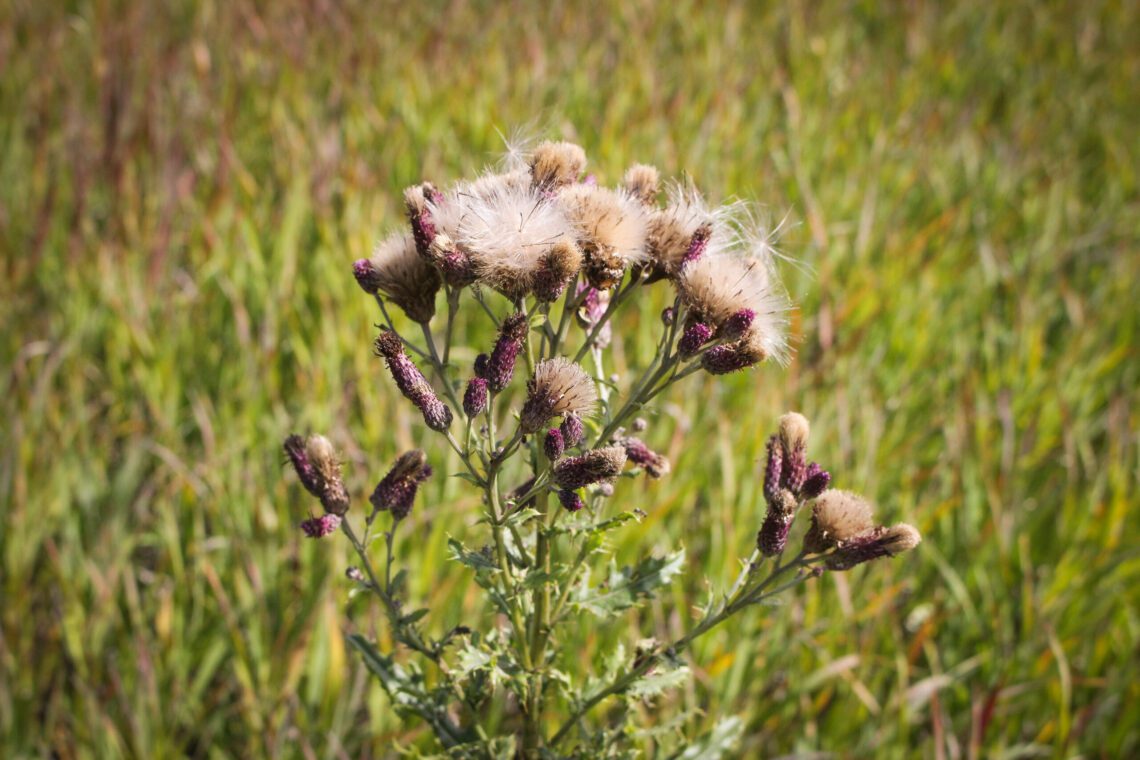Noxious weeds are turning prime habitat into a wasteland
By Benjamin Alva Polley EBS COLUMNIST
This is the first installment in a three-part series on invasive plants. Read part two to see how to identify and fight noxious weeds to protect prime habitat.
Far deadlier in the long run than predators, wildfire and maybe even suburban sprawl, noxious weeds are set to turn a staggering three million acres into a wasteland this year, destroying habitat for elk and other wildlife. The alarming scale of this problem demands immediate attention and action.
Tom Henderson, the former owner of Bitterroot Outfitters, who leads hunting journeys into the Selway-Bitterroot Wilderness and the Frank Church-River of No Return Wilderness, embarked on his weed-spraying foray in the backcountry 31 years ago. His involvement was sparked when habitat managers reached out, knowing that his mules could carry herbicide and cover more ground than backpack sprayers. Henderson’s initial battle against toxic plants revealed the stark reality: the very places that had nurtured his dreams of hunting and adventure and sustained his livelihood for decades were under siege.
Habitat managers use methods to remove these invasive plants, including spraying chemicals, pulling roots, cutting flowerheads, and bio-control measures like goats, sheep or weevils, highlighting the scale and complexity of the problem.
The fight stretched from just beyond Henderson’s front door in Montana’s Bitterroot Valley up into the national forest and the high-country cathedrals of the Selway-Bitterroot and Frank Church-River of No Return wilderness areas. He soon found himself looking for weeds everywhere he went, especially on his trips as a hunting guide. The role of individuals and organizations like Henderson’s Bitterroot Outfitters in this fight is crucial, as they are on the frontlines of the battle against invasive plants.
When he has hunting clients deep in the backcountry, searching for wildlife, some of his other employees take care of things in camp, but sometimes the cook goes out and sprays invasives.
“When my cook is not tending to the biscuits, we are spraying weeds,” Henderson said. “We are always spraying weeds.”
The problem is so pervasive that he rarely needs to look far. Invasive weeds deploy ingenious ways to penetrate the backcountry, causing significant harm to the ecosystem. They latch onto vehicles, clothes, shoelaces, pets and livestock; weasel into hay bales, seeds or feed; drift down rivers and ride the wind. Unfortunately, none of this is unique to the Bitterroot. All across elk country, noxious weeds from foreign lands have impoverished America’s best-remaining wildlife habitat, which should deeply concern us all.
Noxious weeds become monsters, unleashed from the ecosystems where they evolved with predators and competitors that helped hold them in check. They overturn and undermine the rich biodiversity of grasses and forbs that elk, deer and pronghorn depend on, replacing them with veritable junk food often downright poisonous to wildlife and livestock.
The U.S. government recognizes 4,000 “exotic plants,” which cover an estimated 133 million acres, equal to the size of California and New York combined. Since 2010, they cost the nation more than $26 billion economically and socially.
Dealing with invasive species seems overwhelming. However, there is hope.
One University of Montana study found that after focused weed treatment, native grass production rebounded from 48 pounds per acre to 1,620 pounds.
Invasive weeds now infest one of every five acres of western public lands. They take over another 4,600 acres of our finest public wildlife habitat daily. And in private and state land, they cripple three million acres. That’s like having weeds covering every foot of Yellowstone and Glacier National Parks. Yet for every defeat, there is a victory in this challenge as private and public land stewards treat hundreds of thousands of acres annually to halt or slow the invasion.
Hal Pearce, weed coordinator for U.S. Forest Service Region 2, oversees Colorado, Kansas, Nebraska, South Dakota and eastern Wyoming. He advises people who feel devastated by invasive plants to size up the problem, make a plan and work toward a goal.
“Amazingly, it looks so overwhelming, but suddenly, three to four years later, it is pretty manageable,” Pearce said.
He stresses the value of private landowners joining forces with state and federal land managers to present a united front.
“Partnerships with landowners and nonprofits are so important because if we only fight invasives on federal land, then we have these huge seed banks, and the tide can only be held back for so long,” Pearce said. “We stand to lose a real treasure in our ecosystems if we don’t build relationships.”
The Rocky Mountain Elk Foundation embraces that view wholeheartedly and has taken a leading role in fighting weeds for the good of elk, deer and other wildlife. From 1989 to 2016, RMEF invested $7.3 million to help fund 765 stewardship projects in 22 states. That leveraged another $28.4 million from agencies and private landowners to treat more than half a million acres of vital elk country.
Tom Toman, former RMEF director of science and planning, said this is money well spent. These exotic invaders often sprout earlier and go to seed before native competitors. Many secrete toxins from their roots or leaves to weaken or kill their native neighbors while leaving their own kind primed to reproduce. Noxious weeds also ramp up soil erosion, fouling streams critical for spawning trout, salmon and other native fish.
“Weeds are a bigger threat to wildlife habitat than even suburban sprawl,” Pearce said. Toman agrees and is proud that RMEF grants agencies and organizations to fight weeds on public and private lands.
“Many people think there is nothing we can do about it,” Toman said. “This isn’t true. There is hope through collaboration, education, early detection, prevention, biological control methods, burning, chemicals, grazing, hand-pulling, mechanical methods and replanting.”
Once a weed infestation is in full swing, the best defense is a targeted, integrated approach drawn from the full quiver of methods. Yet the most effective method is spotting and attacking new infestations before they get out of control. Hunters and other outdoor recreationists can play a vital role in this, knowing how to identify the non-natives and then quickly reporting them to weed managers. To aid in that effort, here are seven weeds of grave concern to wildlife managers in the Greater Yellowstone Ecosystem: Canada thistle, Dalmatian toadflax, houndstongue, leafy spurge, spotted knapweed, cheatgrass and oxeye daisy.
Tom Toman said one of the blessings of weeds is they have inspired scores of collaborative efforts that have brought diverse groups together at the conservation table.
“More people seem conscientious about weeds and out looking for them today. It’s important to stay on top of this and use the latest science—like the new bacterium for cheatgrass. Herbicides are crucial in the fight, but we want to do everything possible to avoid destroying what we’re trying to save. We want to keep the biodiversity,” he said. “When it comes to weeds, everybody wants immediate gratification or a magic bullet. There isn’t one.”
Toman said people often asked him how long this weed war would take to win. His reply was simple.
“Forever. The fight is never over, but that doesn’t make it any less essential.”
Benjamin Alva Polley is a place-based storyteller with stories published in Adventure Journal, Audubon, Esquire, Field & Stream, The Guardian, Outside, Popular Science, Sierra, and other publications at his website www.benjaminpolley.com/stories. He holds a master’s in Environmental Science and Natural Resource Journalism from the University of Montana.















